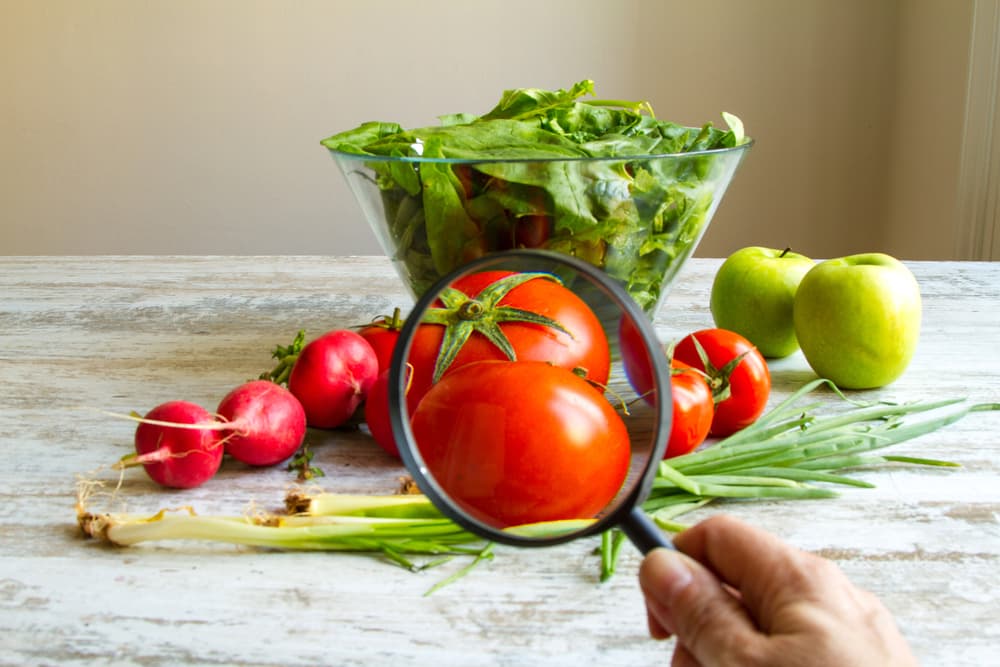While any food can harbor harmful bacteria or toxins, certain foods pose a much higher risk, often due to processing, storage, or preparation methods. Food poisoning can have serious implications, including hospitalization or long-term health issues. Avoiding potential hazards, such as undercooked meat or contaminated produce, is the first step toward preventing and understanding the root causes of a foodborne illness you've suffered.
The Most Common Culprits of Food Poisoning
You can trace every food poisoning episode to a contaminant, many of them very common. Each pathogen is responsible for various symptoms, ranging from mild discomfort to serious, life-threatening complications:
Salmonella
Escherichia coli (E. coli)
Norovirus
Listeria
Campylobacter
Clostridium perfringens
Botulism
Staphylococcus aureus
Food poisoning is often serious, with symptoms including severe dehydration, kidney failure, or even death. This dangerous poisoning happens too frequently, especially when restaurants, food manufacturers, and other providers don't follow appropriate food safety guidelines.
The Foods Most Likely to Cause Food Poisoning
Certain foods are much more likely to cause foodborne illnesses than others, especially with improper handling. These everyday foods potentially harbor bacteria, viruses, or parasites that can lead to stomach pains or worse. Some of the top offenders include:
Undercooked Poultry and Eggs
Poultry, especially chicken, can harbor harmful bacteria, such as salmonella, when someone hasn't cooked it to a safe internal temperature. Undercooking or cross-contaminating other foods with juices from raw chicken can lead to serious illness. Raw eggs are another source of salmonella and have been responsible for several high-profile outbreaks.
Raw Seafood and Shellfish
Raw seafood, especially oysters, can carry harmful bacteria, viruses, or parasites. Vibrio, for example, is a bacteria present in raw oysters and can lead to severe illness. Certain fish can also develop harmful toxins if you don't store them at the right temperature.
Fruits and Vegetables
Unwashed fruits and vegetables have links to food poisoning due to bacteria such as E. coli or listeria, which often come from contaminated soil or water. Leafy greens, including lettuce, have been at the center of several outbreaks because it can be hard to completely remove contaminants from the leaves when washing them.
Ready-To-Eat Meals
Pre-packaged salads, sandwiches, and other ready-to-eat meals can breed bacteria like listeria, which can survive at refrigerator temperatures. Most people don’t cook these foods before consumption, so if processing causes contamination, the harmful pathogens will remain.
Ice Cream
Ice cream has caused mass food poisoning outbreaks due to manufacturers using contaminated ingredients. If they undercook the eggs, harmful pathogens can spread.
Deli Meats and Hot Dogs
Listeria can contaminate hot dogs, ham, turkey, roast beef, and other deli meats, making them potential food poisoning risks, especially for pregnant women or individuals with compromised immune systems.
Sprouts
Sprouts grow in warm and humid conditions, which are ideal for bacteria, such as salmonella and E. coli, to thrive. Thorough cooking can kill these bacteria, but raw sprouts have had links to numerous food-poisoning outbreaks.
Frozen Vegetables
Freezing generally kills harmful bacteria, but some bacteria can survive if contamination of the vegetables occurred before freezing or during processing. Bacteria can also become active again when the product thaws. This issue has led to mass recalls of frozen vegetables with links to Listeria.
Fast Food Products
A single instance of contamination at a fast food chain can adversely affect many people. A significant volume of customers and fast preparation times can sometimes lead to overlooked safety standards. Fast food chains also often source their ingredients from multiple suppliers, increasing the risk of contaminated raw materials tainting the food and causing harm.
Buffet Meals
Buffets, where uncovered foods sit for a long time with no temperature controls, can encourage bacterial growth and illnesses such as norovirus. The more hands that use the same tools for serving food, the higher the risk of contamination.
Peanut Butter
This popular staple has caused serious salmonella outbreaks, leading to high-profile recalls. Contamination can occur when peanuts are in their raw state or during manufacturing if someone didn't adequately clean the equipment between batches, for example.
Ground Beef
These products often come from several cows, so if one animal has E. coli contamination, this can adversely affect a large quantity of meat. If you don't cook ground beef to the recommended temperature, it can allow these pathogens to survive, leading to severe illness.
Understanding which foods are more likely to cause issues can help you make informed decisions. If you believe you contracted food poisoning from any of these sources, especially due to someone else's negligence, an experienced food safety injury lawyer can guide you through the next steps.
Poor Practices That Can Lead to Food Poisoning
Food poisoning often results from avoidable mistakes while preparing, handling, or storing food. Consumers trust businesses, such as restaurants, grocery stores, and food manufacturers, to maintain high standards of food safety, but serious lapses can cause harm. Some poor practices that can significantly increase the risk of food poisoning-related illnesses include:
Inadequate Cooking Temperatures
The purpose of cooking is not just to make food tasty but also to kill any harmful pathogens that might contaminate raw food. When you don't heat food to the recommended temperature, bacteria can survive and multiply, increasing the risk of foodborne illnesses.
The U.S. Department of Agriculture provides specific guidelines regarding the minimum safe internal temperatures for various types of meat:
- Poultry (including chicken and turkey): 165°F.
- Ground meats: 160°F.
- Beef, pork, veal, and lamb (steaks, roasts, and chops): 145°F, with a rest time of at least three minutes.
Businesses that fail to observe these temperatures put their customers at a much higher risk of food poisoning.
Poor Hygiene
Hands are one of the most common sources of bacteria and viruses, making proper hand washing the frontline defense against food contamination. When food handlers don't wash their hands correctly, especially after handling raw food or using a restroom, they can introduce harmful pathogens.
Contaminated Cooking Utensils and Surfaces
Just as hands can transfer pathogens, so can the tools and surfaces you use in food preparation.
- Cutting boards: These are notorious for collecting bacteria, especially if you use them for raw and cooked foods without cleaning them properly in between.
- Kitchen utensils: Knives, spatulas, and blenders can harbor bacteria if you don't clean them correctly.
- Kitchen surfaces: You should routinely wipe down and sanitize countertops, stove handles, and refrigerator doors.
Improper Storage Temperatures
Storing food at the right temperature is as essential as cooking it correctly. Bacteria thrive in the danger zone—temperatures between 40°F and 140°F— and improperly stored food can breed pathogens. This is why businesses must regularly monitor their refrigerators and freezers. Poorly maintained equipment or a simple oversight can result in a whole batch of food turning hazardous.
Cross-Contamination in the Kitchen
Cross-contamination happens when harmful bacteria or pathogens transfer from one food (usually raw) to another, potentially contaminating the safe food. It can happen via direct contact, such as when raw meat drips onto fruits or vegetables, or indirectly, using the same cutting board for different foods without proper cleaning, for example.
While these practices seem basic, their consistent and proper execution is crucial for food safety. When businesses overlook food safety standards, they risk their reputation and the health and safety of their customers.
Taking Legal Action After Food Poisoning
Food poisoning can cause long-term damage to your health, finances, and quality of life. If you suffered preventable food poisoning, you may seek compensation for your damages. If you're thinking about taking legal action, go to the doctor for testing, then consider the following:
Who Can You Hold liable?
When you get sick due to contaminated food, you may hold multiple parties legally responsible. Your illness could result from negligence at any stage in the food supply chain:
- Producers: If contamination starts at the source, such as a farm or processing plant, producers might be liable.
- Manufacturers: These entities process and package foods. Contamination at this level, due to unclean facilities or practices, could make manufacturers legally responsible.
- Distributors: Companies responsible for transporting food items have to maintain certain standards to prevent spoiling or contamination of food.
- Retailers and restaurants: These are the final stops before food reaches the consumer. If a grocery store sells expired products or a restaurant doesn't follow hygiene standards, they could be accountable.
Each of these parties has a duty to ensure the food they produce, process, transport, or serve is safe for consumption. If they breach this duty, consumers can hold them liable for the harm they cause.
Multiple parties may share liability. If, for example, a restaurant serves contaminated meat that the distributor had also stored incorrectly, you can hold both parties responsible for damages.
Finding a Skilled Personal Injury Attorney

Given the complexities of pursuing compensation for a food poisoning-related illness, get the right legal representation.
Here's what to consider when seeking an attorney:
- Experience: Choose an attorney who has experience with food poisoning cases.
- Reputation: Look for lawyers with a proven track record. Check for client testimonials, reviews, and industry recognitions.
- Resources: Winning a food poisoning-related case often requires investigations, the testimony of relevant specialists, lab tests, and many other resources. Your attorney should provide the support of medical experts to strengthen your case.
- Communication: Your attorney should regularly update you and respond to your concerns.
Having an attorney in your corner boosts your chances of a successful outcome and alleviates the stress of navigating the legal system when pursuing compensation for your damages.
An awareness of high-risk foods and poor food-handling practices can help consumers make safer choices and reduce their chances of getting sick.
If you suffer a serious foodborne illness, learn about your rights and the potential legal pathways available. Contact a personal injury attorney today for guidance on your foodborne illness.
